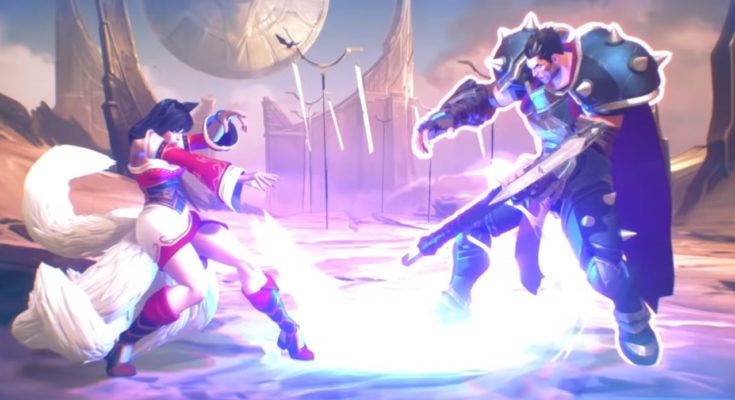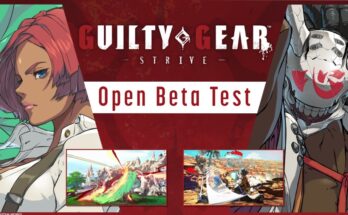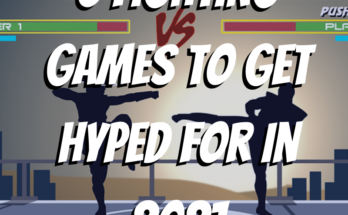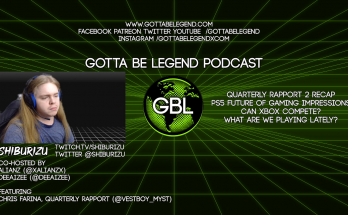Back in October 2019, Riot Games published a video celebrating the 10th Anniversary of League of Legends. It didn’t just celebrate the main game, but it also announced big projects: Legends of Runeterra – the Trading Card Game, League of Legends: Wild Rift -- the MOBA made for consoles and mobile devices, Valorant – the character-based Tactical FPS, and the subject of this article, Riot’s future fighting game with the name yet unrevealed to the public, but commonly called “Project L”.
The announcement of the project wasn’t where it started. It was “announced” before the League of Legends’ 10th Anniversary video, and it started before Riot made any moves to make it happen.
Tom & Tony Cannon – the center of the storm.

The Cannon brothers are long-time fighting game fans. They started loving fighting games in the mid-1990s and quickly wanted to get involved with the competition side of it. With the help of Seth Killian and Joey “MrWizard” Cuellar, they started the “Battle by the Bay” series. An arcade tournament series, mostly featuring Capcom fighting games at the time. After 5 years and the multiple ‘B Series’ tournaments, they decided to opt for a new name and a new brand for the tournament series. The Evolution Championship Series was born.

As everybody knows, they became the standard in the fighting game-related event organization. So much so, that EVO became more of a fighting game-themed trade-show, with game announcements and huge involvement of the publishers, than a tournament ran by the Fighting Game Community (FGC), like how they started.
The Cannon twins were also Computer Science engineers. So, they wanted to invest in fighting games, and help publishers like Capcom to give better products. They decided to work on a project, to make a better way for fighting games to handle the peer-to-peer connection between two players online, simply because the solutions proposed at the time (2005) were simply terrible. This is how GGPO started, and how Rollback netcode became the standard to reach for fighting game netcodes.

But there’s still one field that fighting games never really got over. Back in the early-2010s, the most played and watched games started to be free-to-play titles. League of Legends started there, to grow as the eSport mastodon it became. Meanwhile, the Cannon twins started a game dev studio called Radiant Entertainment. While they were working on non-fighting game projects, they quickly started to work on a fighting game that has the same business model as League of Legends.
Rising Thunder – the real beginning.
The Cannon twins brought Seth Killian to work on the project. He also worked on several Capcom fighting games, as a game balance consultant. The project started as a closed pre-alpha test and quickly showed good signs of development. It had the latest GGPO netcode at the time, was keyboard-friendly, and had proper systems reminiscing people of Street Fighter IV. The project started to grow, but in the middle of its pre-alpha run, this happened.

This was big news in the FGC. The whole community isn’t known to be on PC like MOBA players are. Rising Thunder was only available on PC, but the whole Fighting Game Community comes from the arcade gaming space. Having an actor as big as Riot (and by extension, Tencent) can have a huge impact on the FGC moving forward. That was 3 years before Tom Cannon officially announced the project at EVO. So, the writing was on the wall during all this time.
Where the Project was revealed.
A lot of people assume that “Project L” will be a rebirth of Rising Thunder. The same ideas will be kept and the same goals will be set. Rising Thunder worked as a very ground-based 2D fighting game, not unlike the Street Fighter series. But what made the series different was that they removed the classic motions from the Capcom series. No quarter-circles or dragon punches. Every special move is assigned to a cooldown-based button. Not unlike a certain MOBA.
It was purposely made to make the game very accessible for keyboard players, the main game controller device for the vast majority of PC players. A move done to not just satisfy the needs of fighting game veterans, but also to anyone new to the genre, and I believe that’s what hooked Riot in the first place. Reaching for the maximum amount of players, and not just reaching for the specialists. It’s also important to note that Seth Killian, one of the minds behind Rising Thunder, left Riot Games to join Epic Games, but this doesn’t change Riot’s plans moving forward.

The multi-flavored propositions coming from all those exploited genres, as well as the interactions each project will have from each other, makes “Project L” a unique situation, compared to every other fighting game on the market.
But as much as people seem very positive about this, as an FGC member, I’m not that enthusiastic. The FGC isn’t big in numbers. Compared to other competitive communities of other genres of games, the Fighting Game Community is older but less populated than other genres. Comparing to the massive influx of players that Riot Games can reach, the gap is abysmal, and why it might be a good or a bad thing can be explained with the context surrounding one popular fighting game.
Street Fighter IV: when things changed.

Within the Fighting Game Community, and the fighting games themselves, there was a “before” and an “after” SFIV. Its influence can still be seen to this day, in games like Tekken 7, the Mortal Kombat series after the 9th episode, or even Guilty Gear Xrd. A lot of people credits the Capcom game for revitalizing fighting games in early-2010’s.
On the eSports side of things, this is the game that put the FGC on the eSport map. Fighting games had national and international competitions 10 to 15 years before it, but it was almost invisible to the eSport industry, which was little at the time, and very PC-centric. To this day, if you ask an eSport specialist what was the first eSports, they will probably answer you Quake or StarCraft. Certainly not Street Fighter II, which had national tournaments since 1992. 7 years before the release of both PC titles.

At the time, the planets were aligned for Street Fighter to boom. Early 2010 is also where Twitch, the streaming platform, had its beginnings. It brought a lot of eyes into the genre, which grew the FGC exponentially. More people were playing online, curious about how the game should be played, and eager to learn how to play with an arcade stick.
But there was a huge caveat. There were more new people in the FGC than veterans. It became very hard to have trustful information about how the FGC worked in the past 2 decades when more than two-thirds of the people going to tournaments and talking about fighting games only started them with SFIV. Because of this, the community started to feel less diverse in what games were played, values started to get lost, and toxicity picked up.
“Because the community has gotten so big, […] a lot of the respect that used to be [in the FGC] is just gone.” – Mike Z.
Because of its previous size, the community was easy to moderate. Bad apples were dealt with easily, and things could change easily. As explained in the video, the term “raped” was little-by-little replaced by “bodied” by the Marvel VS Capcom 2 scene, and homophobic slurs were accordingly punished. It wasn’t the case everywhere in the world, but the various scenes were niche enough to not let things slip like this. After SFIV, we had a member of the community, on tape, bully someone for being a girl and that same person is still a heavily respected figure in the FGC.
Toxicity is already an issue in League of Legends. People debated about how effective their tribunal is. Riot has the power to do something as impactful as Street Fighter IV, and the FGC might be too small to help or contain the immense flux of curiousness that a Riot-branded game might bring. It might get to a state that the Riot players don’t adjust to the FGC, but the FGC will adjust to them.
The Riot recipe.

The FGC was always about the grassroots. We started in arcades where each local scene had its own sets of games they played, their jargon and their ways to play fighting games. It then grew, linking many local scenes around one local tournament. The ‘B Series’ started as a Californian event, before being the global event that EVO is today, and fighting game pro-circuits curated by publishers only started in the mid-2010s. Much later after the first global events that the FGC had. Fundamentally, the FGC built themselves in a ‘Bottom-Up’ structure.
Meanwhile, just like the graphics shows, Riot made League of Legends a global sport, before being local. They took a ‘Top-Down’ approach, and they did it by controlling every single step and every one of their divisions. This isn’t a standardized model since both Counter-Strike and DotA proved to be a very successful eSport without the constant control of Valve over their Intellectual Properties.

That fundamental difference between how the FGC operates as a community and how Riot operates as a company can be easily shown by what can or cannot be done to their respective players. Within the FGC, a player can play and compete in as many games as they want, regardless of the concerned publisher(s). On the other side, Riot will impose exclusive contracts with the professional players within their franchised leagues.
In this situation, even Riot sort of tied their own hands. If they were willing to make exceptions for the FGC, and solely for “Project L”, what message would that send to the League of Legends community that had their own grassroots initiatives being shut down by the publisher?
“Follow the money”.

Even towards third-party event organizers, Riot has one of the strictest rules of event organization, not allowing the event to host any other events than the ones made by Riot. Which is in a complete mismatch with how the FGC operates for 20 years. You just have to watch EVO during the Sunday finals to see WB Games, Bandai Namco, Capcom and Nintendo share the spotlight with their respective IP’s for 8 hours.
What makes me the most pessimistic is the balance of power between those two entities. As an eSport genre, fighting games are not as profitable as MOBAs and FPS are, not by a long shot. The genre’s Return of Investment (ROI) is very low and only a fraction of the top fighting game players in the world can pretend to be full-time professional players.
The FGC has almost no leverage to pull against a mastodon like Riot/Tencent. They can push no demands that Riot cannot refuse. They can just steamroll their way into the genre, impose their calendars, their contracts, their will, and players would have no other choice but to comply. This would be harsh for other publishers if this were to happen because not even Capcom can stop most of their Premier events from having main-events like Tekken or Mortal Kombat with them.
David against Goliath.

Any communities, especially competitive gaming, need a consistent arrival of new players, willing to learn and invest in their respective scenes. That’s also what every publisher invested in esports want to do with their competitive IP’s. With a lack of incentives coming from the FGC, and despite its diversity, the community might face the biggest drought of community investment, ever. I’m not talking about simply playing fighting games, but going in community-made fighting game events, support local scenes, etc.
Nobody should expect Riot to care about the FGC’s needs. They’re a company, wanting to make and control sports. It would be naïve to think that even the Cannon twins could pressure them for doing more down-to-earth organizations. Riot never proved they can operate that way.
With the resources Tencent can allow to the project, Riot’s management oversees its eSports pro-scenes, and the FGC’s fragile state, I tend to believe that “Project L” has the potential to end the FGC as we know it. And there’s not a lot of things that the FGC can do about it. As a player and an eSports enthusiast, I’m excited about the project’s potential, and where it can lead fighting game esports moving forward. But I fear that the FGC, and especially its history and principles, might be shrunk down even more, or just simply disappear.




